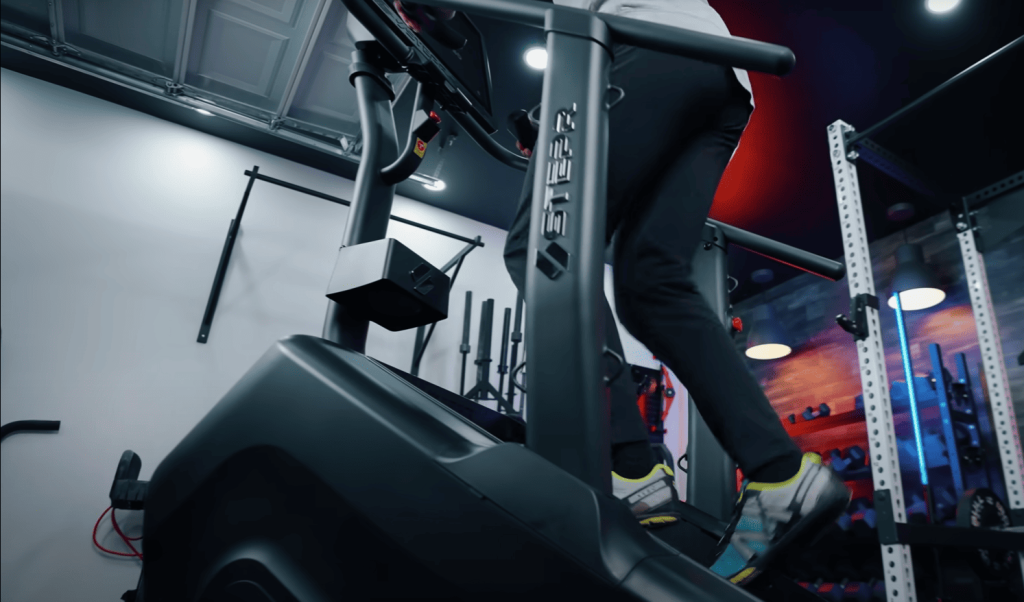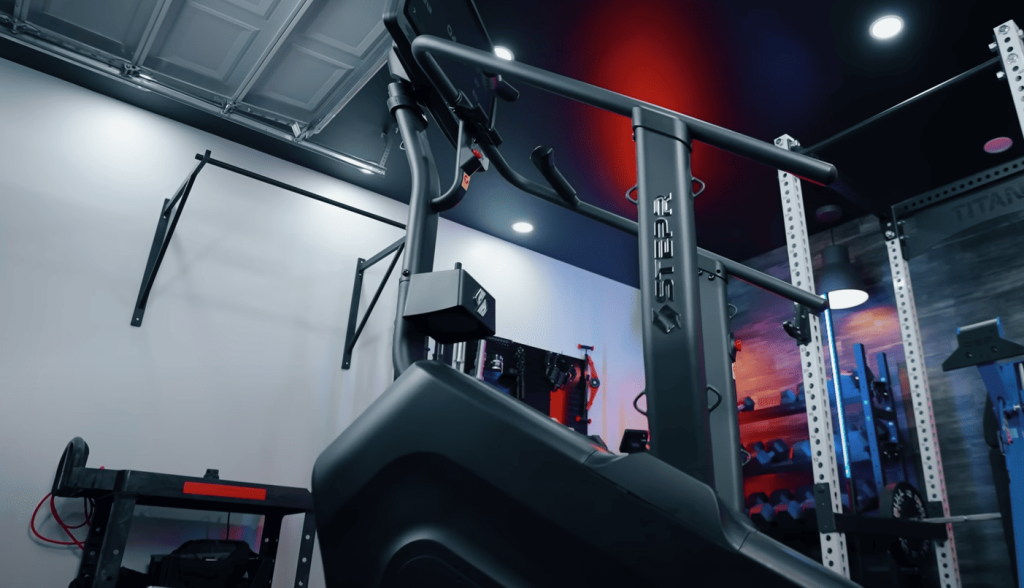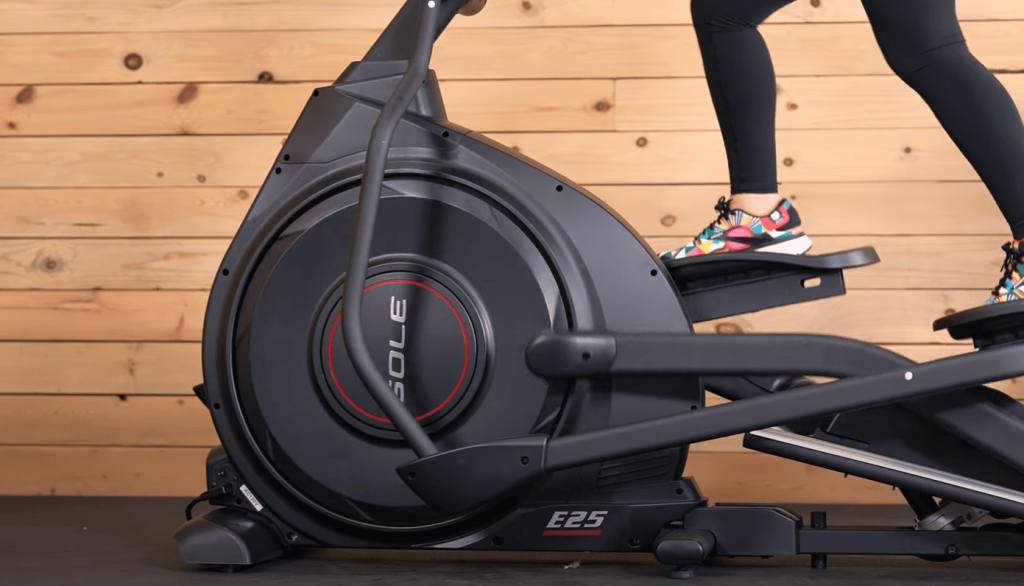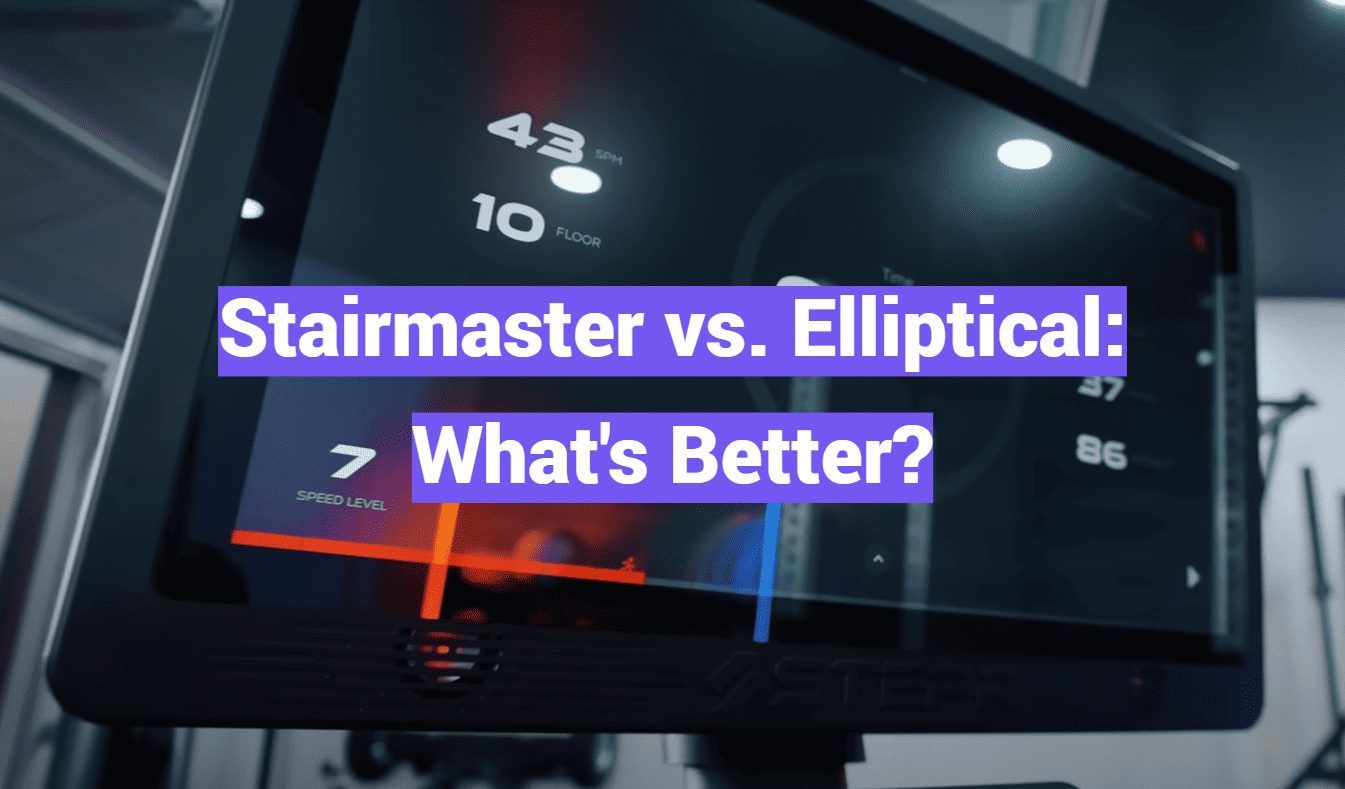Did you know a 155-pound person burns 50% more calories on an elliptical than a stair climber in the same 30-minute session? This stark difference highlights why choosing the right cardio equipment matters for your goals. Both machines dominate gym floors and home setups, but their impacts vary wildly.
One strengthens legs like a mountain hike. The other glides smoothly, sparing joints while torching calories. Your fitness journey hinges on understanding these contrasts. Are you chasing weight loss, building endurance, or protecting creaky knees?
We’ll break down how each machine shapes workouts. Learn which burns fat faster, builds muscle smarter, or adapts to limited space. Discover surprising facts about calorie counts, muscle engagement, and long-term joint health.
By the end, you’ll know exactly which piece of cardio equipment deserves your sweat—and why. Let’s cut through the noise and find your perfect match.
Key Takeaways
- Ellipticals burn 324 calories in 30 minutes for a 155-pound person, outperforming stair climbers
- Stair-focused workouts target glutes and quads more intensely
- Low-impact elliptical motions reduce joint strain during cardio sessions
- Machine choice depends on weight loss goals versus muscle-building priorities
- Home gym users should consider equipment size and noise levels
Introduction to Cardio Machines
Ever wonder why gyms overflow with so many exercise options? Cardio equipment forms the backbone of modern fitness spaces, offering tailored ways to boost heart health and stamina. Your choice depends on what you want to achieve—whether shedding pounds, gaining endurance, or staying active without strain.

Define Your Purpose First
Fitness goals act like GPS for navigating gym equipment. Aiming for weight loss? High-calorie burners might suit you. Recovering from injury? Low-impact choices protect joints. Muscle building? Resistance-focused machines deliver results. Write down three priorities before stepping onto any machine.
Equipment Variety Explained
Modern cardio machines cater to diverse needs. Treadmills mimic natural running motions, while rowers engage both upper and lower body muscles. Stationary bikes offer seated workouts ideal for beginners. Each machine trains your heart differently—some spike intensity, others sustain moderate effort.
Advanced features like heart-rate sensors and custom programs help track progress. Compact designs make many models home-gym friendly. Remember: The best workout matches your current ability while pushing you toward long-term fitness milestones.
What Is a StairMaster?
Step into any gym, and you’ll find equipment that turns vertical motion into a science. This iconic machine transforms simple stepping into a full-body challenge, blending cardio intensity with muscle-building potential.
How It Works: The Science of Stepping
The device operates through rotating pedals that mimic ascending stairs endlessly. Users control their workout through adjustable speed dials and resistance knobs—higher settings demand more power from your legs and core. “It’s like having a customizable mountain in your living room,” notes fitness coach Lisa Marquez.
Built-in handles help maintain balance during intense sessions. Digital displays track calories burned, floors climbed, and heart rate. Unlike traditional staircases, the machine’s fluid motion reduces sudden joint impact while maintaining natural movement patterns.
Leg Day, Every Day: Muscle Development
Each step engages your lower body chain—quadriceps firing first, followed by glutes and hamstrings. Calves work overtime to push through the pedal’s full range of motion. Higher resistance levels force muscles to adapt, creating lean muscle mass over time.
Three key benefits emerge from regular use:
- Enhanced bone density from weight-bearing activity
- Improved posture through core stabilization
- Increased explosive power for sports performance
While primarily targeting legs, the machine also challenges balance and coordination. Users often report better endurance during hiking trips or multi-story building climbs after consistent training.
What Is an Elliptical?
Imagine gliding through a workout that feels like floating. This machine’s secret lies in its circular stride pattern—a design that turns grueling cardio into smooth, rhythmic movement. Let’s explore why millions choose it for sustainable fitness.
Fluid Movement, Lasting Results
The elliptical machine uses suspended foot pedals and synchronized handles. Your feet trace an oval path while arms push/pull the bars. “It’s cross-country skiing meets stair climbing—without the impact,” explains physical therapist Marco Ruiz.
Three key features define its motion:
- Zero-impact foot trajectory protects joints
- Adjustable resistance builds endurance
- Reversible pedaling works neglected muscles
| Motion Type | Impact Level | Muscles Engaged |
|---|---|---|
| Elliptical | Low | Full-body (85%) |
| Running | High | Lower-body (65%) |
| Cycling | Moderate | Legs (70%) |
Total-Body Conditioning Made Simple
Push the handles to fire up your shoulders and triceps. Pull them backward to activate lats and biceps. Meanwhile, legs power through quad-burning revolutions. This full-body workout torches calories while keeping heart rates steady.
Ideal for arthritis sufferers or post-injury rehab, the machine’s fluid motion prevents jarring shocks. Most models let you adjust incline and resistance—climb virtual hills or sprint on flats. Modern consoles even sync with fitness apps to track progress.
Whether you’re new to exercise or training for a marathon, this elliptical machine adapts to your needs. Its space-efficient design fits apartments, while whisper-quiet operation keeps neighbors happy. Now that’s smart body mechanics!

stairmaster vs elliptical: Calorie Burn and Weight Loss
Which machine turns your sweat into weight loss gold? Let’s crunch the numbers. Research reveals surprising differences in how these two popular options attack body fat.
Calorie Burning Efficiency and Exercise Intensity
Harvard Health data shows a clear winner for immediate calorie burn. A 155-pound exerciser torches 324 calories in 30 minutes on gliding equipment versus 216 calories climbing steps. The secret? Full-body engagement.
| Machine Type | 30-Minute Calories | Muscle Groups Used | Ideal Session Type |
|---|---|---|---|
| Elliptical | 324 | Arms, legs, core | Steady-state |
| Stair Climber | 216 | Legs, glutes | Interval training |
Moving handles while pedaling creates compound movements that demand extra energy. “You’re essentially doing resistance training while keeping your heart rate elevated,” explains certified trainer Rachel Kowalski.
Impact on Weight Loss and Overall Calorie Expenditure
While one machine burns more upfront, the other offers hidden advantages. High-intensity stepping sessions create an afterburn effect—your body keeps frying calories for hours post-workout.
Three factors determine long-term success:
- Consistency in weekly sessions
- Gradual intensity increases
- Combining workouts with proper nutrition
“The elliptical gives you more fuel burned per minute, but those stair sessions keep your metabolism fired up for hours.”
For sustainable weight loss, blend both approaches. Use the stepper for quick, intense bursts and the glider for longer fat-melting sessions. Remember—the best routine is the one you’ll actually do!
Muscle Building: Strengthening Legs and Glutes
Building muscle requires smart equipment choices. Two popular options offer distinct approaches—one hammers specific areas while the other spreads effort across your frame. Your goals determine which strategy works best.
Precision Power for Leg Development
Climbing-based machines transform simple steps into leg-shaping workouts. Each upward push fires quadriceps first, followed by glutes and hamstrings. Calves work overtime to complete the motion’s full range.
Three muscle-building benefits stand out:
- Natural resistance from body weight enhances lower body definition
- High-intensity intervals spark fast-twitch fiber growth
- Balanced engagement prevents strength imbalances
Full-Frame Activation Strategy
Gliding equipment takes a different approach. Handles work arms and shoulders while pedals engage legs. Core muscles stabilize your entire body throughout the elliptical motion.
| Equipment Type | Primary Muscles | Secondary Muscles |
|---|---|---|
| Climber | Quads, Glutes | Calves, Core |
| Glider | Legs, Arms | Back, Chest, Abs |
Physical therapist Dana Lewis notes: “The elliptical’s secret sauce? It trains coordination between muscle groups while keeping joints happy.”
For razor-sharp leg definition, climbing workouts deliver concentrated strength training. Those seeking balanced development prefer the glider’s whole-body approach. Match your machine to your muscle priorities.
Cardio and Joint Health: Comparing Impact
What if your cardio routine could protect your joints while boosting heart health? Smart equipment choices make this possible. Your knees and hips deserve workouts that challenge your cardiovascular system without unnecessary wear.

Protection Meets Performance
Gliding machines shine for joint-friendly exercise. Their smooth motion keeps feet planted, reducing impact on knees by 40% compared to running. This design helps maintain healthy heart rate zones without pounding your joints.
Climbing equipment offers different benefits. While creating more muscle activation, it still beats high-impact activities like jogging. Users get elevated heart rates and better circulation—key for cardiovascular fitness.
Three factors matter most:
- Existing joint concerns (especially knees/ankles)
- Desired workout intensity
- Long-term joint preservation goals
Both options improve heart health, but their approaches differ. Low-impact machines let you exercise longer with less discomfort. Stepping models build bone density through weight-bearing motion. Match your pick to your body’s needs—your future self will thank you!

